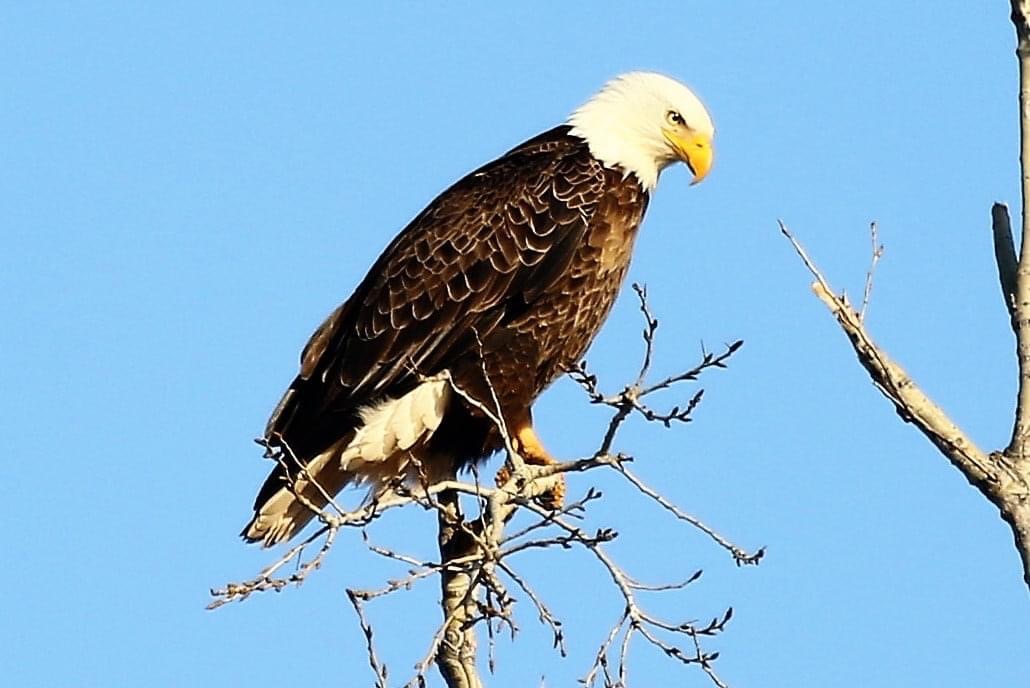Resource Library
Plant of the Week: Bald eagle deaths explained
After more than 25 years a cold case has been solved. The cause of the deaths of more than 70 bald eagles during the winters of 1994 to 1996 in and around Lake DeGray in west-central Arkansas has been resolved. The deaths of these iconic birds were big news during the time and I followed the reports on the local news. No culprit was identified, it didn’t reoccur and so it faded from sight.
Then, just this week (Science 371, 26 March, 2021) a report appeared by over 20 scientists from all over the world, identifying the tangled web of events that lead to the death of the birds as reported in Science, perhaps the most prestigious publication devoted to scientific investigation in the world. Steffen Breinlinger, the lead author on the paper and now at the Institute of Pharmacy at Martin-Luther University in Halle-Wittenberg in Germany, wrote his Ph.D. dissertation on untangling the cause of bald eagle deaths across the southeastern states during the last decade of the 20th century.
While the first bald eagle deaths were reported in Arkansas, others soon surfaced at 10 sites in six southeastern states. By the end of the decade scientists had observed that the deaths occurred during the late fall and winter and that abnormal lesions were found in the brains of the dead birds. In 1998 they named this new affliction avian vacuolar myelinopathy (AVM) but found no pathological or environmental cause for the disorder. Not just eagles were affected. Coots, ringnecked ducks, mallards, Canadian geese and others were also afflicted.
The focus of research to understand the cause of AVM finally zeroed in on environmental conditions in lakes where dead birds were found. There were numerous lakes throughout the southeast with eagle populations but no dead birds. All of the affected lakes were found to be infested to varying extents by invasive aquatic weeds, especially Hydrilla verticillate, an Old World aquatic weed that was used in aquariums to oxygenate the water. It escaped into Florida waterways in the 1950s and has now spread widely across the United States where warmer winter temperatures prevail. Looking at the hydrilla more closely, they soon discovered that lakes with dead birds had a cyanobacteria (a blue-green algae I discussed last November that pioneered the process of photosynthesis) associated with the weed while lakes with no deaths were free of the hydrilla-specific blue-green algae.
Cyanobacteria are known to produce toxins, and only last summer news reports of dogs sickened by drinking from stagnant pools containing blue-green algae were common. Scientists discovered that more than 95 percent of the hydrilla leaves were coated in this specific blue-green algae when cold water conditions in the fall killed the hydrilla. A number of other species including amphibians, reptiles, turtles and fish all developed brain lesions similar to AVM. So, they changed the name from avian AVM to just VM in recognition of the fact the disorder affected everything in the environment.
Breinlinger’s role in this long-running saga was to identify the toxin and explain its movement through the food web. Eventually they identified aetokthonotoxin (AETX) as “poison that kills eagles.” Through a series of complicated steps, they explained how the compound was synthesized in the blue-green algae and made toxic by the presence of bromide atoms affixed to the compound. It is a classic example of concentration of a toxin as it moves through the food web. Coots, for example are omnivores and eat everything from snails to small fish to vegetation, and are susceptible to the AETX toxin. Not all coots and other aquatic birds feeding in Lake DeGray were killed outright, but it is suspected that VM slowed their reaction time, making them easy targets for bald eagles. With a ready diet of sickened coots and ducks, the toxins accumulated in the brains of the apex predator and some died.
Where did the bromide come from? Some bromide is present in the natural environment, but enough to saturate the reaction sites of the AEXT molecule indicates a manmade source. The most likely is one of the bromide-containing herbicides such as diquat dibromide, a compound registered for control of aquatic weeds. In Lake DeGray, sterile grass carp have since been used to control hydrilla populations, but the invasive threat caused by escape of these pernicious fish makes this approach a hard sell for many lake managers.
Armed with a better understanding of the tangled web of life, hopefully we will avoid this particular pitfall as we stagger blindly into the brave, new world of the future.
For more information about horticulture or to see other Plant of the Week columns, visit Extension’s Website, www.uaex.uada.edu, or contact your county extension agent. The Cooperative Extension Service is part of the U of A Division of Agriculture.
